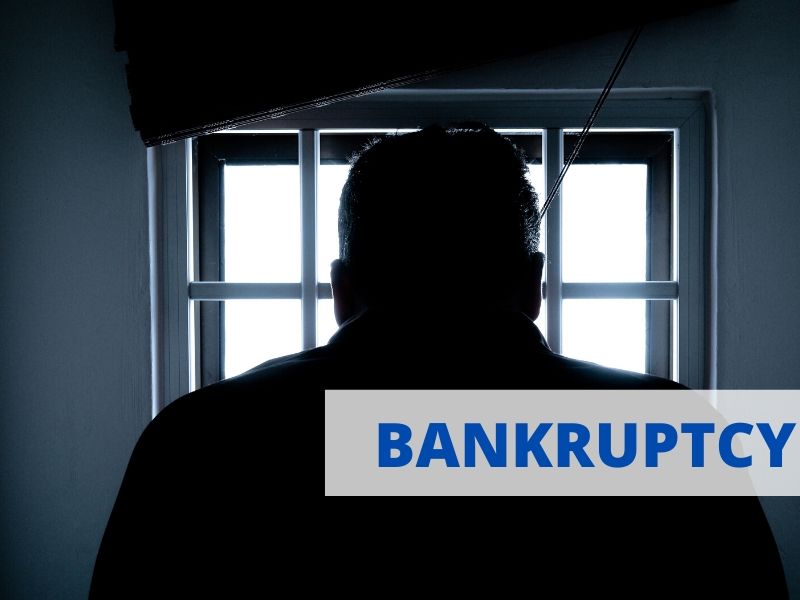Relation Back: Escaping Bankruptcy No More
by Lavinia Kumaraendran & Avinash Kamalanathan ~ 21 May 2020


Lavinia Kumaraendran (Partner)
Tel: 603-6201 5678 / Fax: 603-6203 5678
Email: lkk@thomasphilip.com.my
Website: www.thomasphilip.com.my

Avinash Kamalanathan (Associate)
Tel: 603-6201 5678 / Fax: 603-62035678
Email: avi@thomasphilip.com.my
Website:www.thomasphilip.com.my
When dealing with the law of bankruptcy it is a common conundrum faced that, upon the pronouncement of a bankruptcy order against the bankrupt, the creditor then comes to realise that there is nothing left to obtain from the estate of the bankrupt.
A common trend is that the ownership of the bankrupt’s assets will be transferred out of the bankrupt’s estate and at the end of the day, the bankrupt is left with nothing to his name.
This article will discuss the doctrine of relation back and how it negates transactions made by a bankrupt to avoid fulfilling his or her obligations.
BRIEF OVERVIEW
Before delving into the safeguards of the doctrine of relation back, it is imperative to have a brief overview of the various stages of bankruptcy proceedings to appreciate when the doctrine of relation back will come to the fore.
Bankruptcy proceedings are a form of execution proceedings available to a judgment creditor who has obtained a judgment or an order for the payment of monies against the judgment debtor.
Under S.3(1)(i) of the Insolvency Act,1967 (the “Act”) an act of bankruptcy is committed by the debtor upon the service of a bankruptcy notice on the debtor and there has been no response to the bankruptcy notice by the debtor within 7 days from the receipt of the same. It is imperative for the purposes of this article to appreciate the date in which the act of bankruptcy is committed.
DOCTRINE OF RELATION BACK
Upon the pronouncement of a bankruptcy order against the bankrupt, the entirety of the bankrupt’s estate now vests with the Director General of Insolvency (DGI) to ensure that the bankrupt’s assets can then be liquidated and distributed accordingly to the creditors of the bankrupt.
47. Relation back of Director General of Insolvency's title
(1) The bankruptcy of a debtor, whether the same takes place on the debtor's own petition or upon that of a creditor, shall be deemed to have relation back to and commence at the time of the act of bankruptcy being committed on which a bankruptcy order is made against him, or if the bankrupt is proved to have committed more acts of bankruptcy than one to have relation back to and to commence at the time of the first of the acts of bankruptcy proved to have been committed by the bankrupt within six months next preceding the date of the presentation of the bankruptcy petition.
The Act makes it inherently clear that upon an act of bankruptcy (as defined above) being committed, the ownership of the bankrupt’s estate is vested with the DGI but the DGI does not have control of the estate until the pronouncement of the bankruptcy order. The importance of this section is often overlooked in bankruptcy proceedings.
Very few authorities discuss the jurisprudence of this doctrine due to the scarcity on the reliance of this doctrine by the legal industry. Below is a case that discusses this doctrine in depth.
Abu Bakar bin Jaafar & Anor v Malayan Banking Bhd [1991] 2 MLJ 487, HC, as per Justice Mohamed Dzaiddin at page 488.
“As has been seen, under s 47(1) of the Act, the bankruptcy of a debtor shall be deemed to have 'relation back' to and commence at the time of the act of bankruptcy being committed on which a receiving order is made against the bankrupt. Hence, the property of the bankrupt shall vest in the official assignee only upon the making of the adjudication order. However, the title of the official assignee, under the doctrine of 'relation back', is related back from the date of adjudication to the commencement of the bankruptcy. Therefore, any dealings by or with the bankrupt after the commencement of the bankruptcy is prima facie invalid and can subsequently be set aside by the official assignee.”
The above authority makes it clear that any transaction to sell or dispose of any of the bankrupt’s assets subsequent to the act of bankruptcy would be declared a void transaction due to the fact that the bankrupt, at the material time, had no ownership of the said asset. There are however exceptions to this rule which will be discussed below.
EXCEPTIONS TO THE DOCTRINE
54. Protection of bona fide transactions without notice
(1) Subject to the foregoing provisions of this Act with respect to the effect of bankruptcy on an execution or attachment, and with respect to the avoidance of certain settlements and preferences, nothing in this Act shall invalidate in the case of a bankruptcy--
(a) any payment by the bankrupt to any of his creditors;
(b) any payment or delivery to the bankrupt;
(c) any conveyance or assignment by the bankrupt for valuable consideration;
(d) any contract, dealing or transaction by or with the bankrupt for valuable consideration
…
(2) For the purpose of this section "valuable consideration" means a consideration of fair and reasonable money value in relation to--
(a) the value of the property conveyed, assigned or transferred; or
(b) the known or reasonably anticipated benefits of the contract, dealing or transaction.
Section 54 of the Act is comprehensive in its coverage and has been summarized above for the purpose of brevity in this article. In essence, this section provides for instances where a transaction that occurs subsequent to an act of bankruptcy, will not be caught by the doctrine for a multitude of reasons as set out but mainly when there has been valuable consideration in exchange for the asset sold. Valuable consideration has also been defined by Section 54 (2) of the Act.
APPLYING THE DOCTRINE AND ITS MAIN EXCEPTION
To fully appreciate the practical applications of the doctrine and its exceptions, reference can be made to the hypothetical situations below.
Situation A
Samuel obtained a monetary judgment against Benjamin and had commenced bankruptcy proceedings against Benjamin. Benjamin committed an act of bankruptcy on 01.01.2020 and a bankruptcy order was entered against Benjamin on 01.04.2020.
On 01.02.2020, Benjamin transferred his house to his wife, Judith as a gift. No money was exchanged between Judith and Benjamin for his house.
The doctrine of relation back would kick in and render the transaction between Benjamin and Judith to be void and as such, the ownership of the house would remain with Benjamin and would be subject to the control and distribution of the DGI.
Situation B
Fazurah obtained a monetary judgment against Alia and had commenced bankruptcy proceedings against Alia. Alia committed an act of bankruptcy on 01.01.2020 and a bankruptcy order was entered against Alia on 01.04.2020.
On 01.02.2020, Alia sold her house to Nicholas for valuable consideration (i.e. the market value of the house) and the money obtained from the sale is now included as part of Alia’s assets.
The doctrine of relation back will not apply in this situation for it falls within one of the exceptions as elucidated in Section 54 of the Act.
VOLUNTARY SETTLEMENT
Voluntary settlement (governed under Section 52 of the Act) is an avenue of protection available to the creditor to declare void any transfer of the debtor’s assets prior to the debtor becoming a bankrupt within the stipulated 5-year time frame.
(See: Section 52 of the Act for the full understanding of the provision)
How this differs from the doctrine of relation back is mainly in the timelines involved. The doctrine prevents any disposal of the debtor’s assets after the occurrence of an act of bankruptcy. This provision, however, goes beyond such timeline to provide security for any fraudulent transaction that occurred up to 5 years prior to the pronouncement of the bankruptcy order.
Assuming a situation falls within the definition of a fraudulent transaction and the timelines dictate that S.52 of the Act would apply, such transaction would be void against the DGI. However, S.52 has its own proviso and exception whereby the transaction will not be deemed void if the debtor at the time of making the transaction can show that the debtor was capable of paying all his debts owing at the time.
In furtherance of the above exception, the usual exceptions for the protection of a bona fide transaction as explained under Section 54 of the Act would also be applicable in such a scenario.
The Federal Court recently in the case of Yui Chin Song & Ors V. Lee Ming Chai & Ors, [2019] 7 CLJ 740 discussed Section 52 of the Act and the applicability of the exceptions in Sections 53 and 54 of the Act, respectively.
“[23] Section 52 of the Bankruptcy Act affects only settlement or transfer of shares by the bankrupt transferors (in this case, Cha Bok and Tui Eng) ie, transactions between the bankrupt as the transferors and the immediate transferees. Subsequent transferees like the defendants do not fall within the ambit under s. 52. … It must be stressed that the avoidance under s. 52 is only "against the Director General of Insolvency". As such only the DGI is entitled to a declaration that the said transfer or transaction is void, under the section.
Situational Examples
Dave is adjudicated a bankrupt on 01.01.2020. On 01.10.2018, prior to the commencement of any bankruptcy proceedings or an act of bankruptcy, Dave transferred his property worth RM1,000,000 to Kandy at the price of RM100,000 thus not making it a bona fide transaction.
Situation C
At the time of the transfer, Dave’s total assets (including the property worth RM1,000,000) was reflected as RM2,000,000. The total debts owed by Dave to his respective creditors at the time, however, were RM3,000,000.
In such a situation, given that Dave’s debts exceeded his assets (including the value of the property) the DGI is at liberty to apply Section 52 to the above scenario and seek for the transfer of the property to Kandy be declared void. Note that none of the exceptions either in Sections 52, 53 or 54 of the Act are applicable in this situation.
Situation D
At the time of the transfer, Dave’s total assets (including the property worth RM1,000,000) was reflected as RM10,000,000. The debts owed by Dave at the time were only RM3,000,000.
In such a situation, given that Dave’s assets (without including the value of the property) exceeded his debts owed at the material time, the exception in Section 52 applies and the transfer of the property (though not bona fide) will not be void by virtue of Section 52 of the Act.
ENFORCING THE DOCTRINE
Having examined the above situational examples, you realise you fall within a scenario similar to that of Situation A & Situation C. You are now keen on ensuring that an asset that once belonged to the bankrupt, is included again in the assets to be liquidated and distributed by the DGI. To ensure this occurs, steps would need to be taken to invalidate the transaction that fraudulently transferred the particular asset out of the bankrupt’s possession.
The DGI has the authority to invalidate the transaction as alluded to in the case of Abu Bakar (supra). However, if the issue becomes contentious and is disputed by the bankrupt, it then becomes a matter for the deliberation of the courts.
To invalidate the transfer of the asset, an action would need to be filed in Court seeking, inter alia, a declaratory relief that the transaction be deemed void and that as a consequence, the impugned asset be vested in the control of the DGI to be distributed accordingly.
The issue that arises when enforcing this is quite simply the issue of standing or in law referred to as locus standi. This issue was considered in the case below by Justice S. Nantha Balan (as his Lordship then was, sitting as a High Court Judge).
Diamex Sdn Bhd v. Ivory Indah Sdn Bhd & Ors, [2017] 9 MLJ 257, HC, as per Justice Nantha Balan at paragraphs 42 to 47.
“43. … In this regard, I agree that under Section 47 BA 1967, it is the DGI's title to the assets of the bankrupt that shall be deemed to have relation back to and which commenced at the time of the act of bankruptcy.
44. … As such, it is only the DGI who has locus standi to take action to assert any claim with respect to the Land..
46. At any rate, it is my view that being an unsecured creditor, the Plaintiff has no rights, entitlement or claims in or over the Land.
47. Thus, I am of the view that based on the aforementioned reasons, the Plaintiff has no locus standi to make the present claim with respect to, inter alia, the Land.”
The judgment by Justice S. Nantha Balan is clear and concise as to the rightful party to bring an action when making the challenge pursuant to the doctrine under S.47 of the Act. They are as follows:
- Once a bankruptcy order is made, a judgment creditor will put in a proof of debt with the DGI to enforce his claim to the estate of the bankrupt and will then prima facie, be an unsecured creditor.
- It is a trite principle of law that an unsecured creditor has no right to the asset of the bankrupt.
- The party with the proper locus to bring an action under the doctrine and with reference to S.47 of the Act is the DGI and the creditor has no locus to commence the action to invalidate any transaction under the doctrine.
- It is a matter which falls squarely within the statutory jurisdiction of the DGI who acts for and on behalf of the estate of the bankrupt.
The above principle was also confirmed in the Federal Court case of Yui Chin Song (supra). Therefore, when enforcing the doctrine to invalidate a transaction, it is imperative to appreciate that the proper party to commence said action is the DGI and not the creditor (i.e. the judgment creditor prior to the bankruptcy order).
CONCLUSION
The doctrine of relation back in the practice of bankruptcy law is something that is severely underappreciated and misapplied.
Often the winning party is deprived of his winnings simply because the bankrupt can escape his obligations by abusing the lacunas in the law. The doctrine of relation back is a safeguard the law has in place to deter such abuse. Even though bankruptcy proceedings are a very severe form of execution, one must not forget the creditor who deserves his fair share of the spoils.